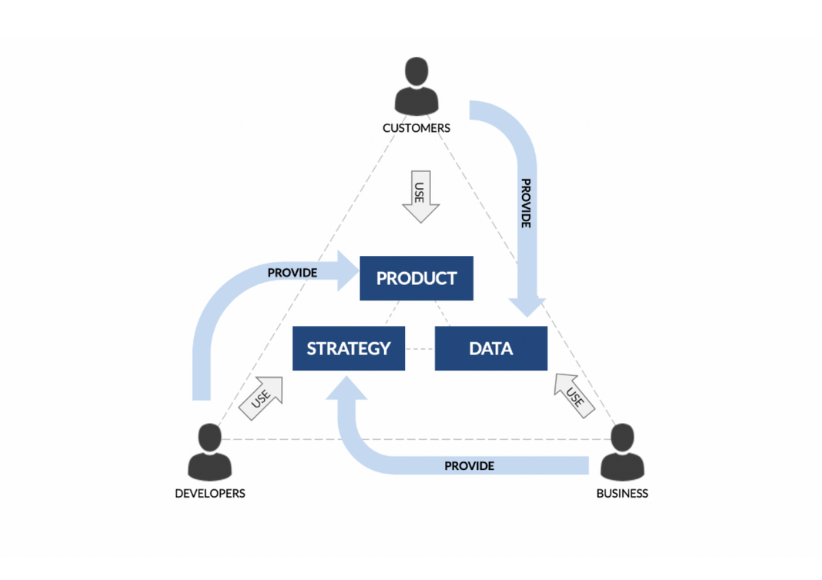Technology
Jun 29, 2020
Using the DevOps Virtuous Cycle to Drive Your Technology Investment Strategy

DevOps is becoming the status quo for any organization that delivers technology to its customers. And for good reason—research has consistently shown that elite DevOps practitioners outperform their peers at mind-boggling proportions: 100 times faster lead time and 200 times more frequent code deployments. All that speed without sacrificing stability: seven times fewer deployment failures and a ridiculous 2,600 times faster mean-time-to-recover from incidents.
Focus on Business Outcomes
But what about business outcomes? In our experience, it is all too easy to become enamored with tools and techniques without actually creating business value. DevOps presents a vast ocean of investment opportunities. It is very easy to invest a lot of resources into DevOps approaches that appear successful but do not actually contribute to the bottom line.
Is there a way to leverage the power of DevOps to achieve even higher levels of business value? Yes. Again, research has shown that elite DevOps performers are twice as likely to achieve or exceed their non-IT performance goals. But this requires a focused approach to the DevOps “virtuous cycle”:
Customers use your product because it provides them with value.
Business stakeholders analyze product usage data to drive your strategy.
Developers use the strategy to develop your product and provide customers with more value.
The goal of your DevOps investment strategy must be to establish and shorten this virtuous cycle. The quicker you can iterate on this virtuous cycle, the quicker you will be able to achieve your desired business outcome.

Understanding the Customer Value Proposition
What would you do if you knew in real-time exactly how your customers were using your product? In order to achieve the virtuous cycle of DevOps, you need to gain a deeper understanding of your customer’s value proposition. You don’t want to start making changes to your product until you’ve understood the current situation. Therefore, your first investment must be to enhance your product to collect key data elements about your users’ current behavior.
For one of our ecommerce clients, the checkout flow was key. Customer usage data indicated that customers were dropping off during the checkout process. Using advanced data collection techniques such as site analytics and user session recording, they were able to pinpoint the most dramatic fallout point within their checkout flow and observe and classify customer behavior into different types of drop-off.
Another client collected data on how their customers were using the search function of their ecommerce site. The data revealed an interesting secondary flow of their search function, which opened up new and profitable ways to help their customers find what they wanted to buy.
Data-Driven Strategy
Once you’ve collected data on how your product adds value to your customers, use the data to inform your strategy for improving your desired outcome. This doesn’t only apply to public-facing products. Sometimes enterprise strategies are most hindered by obsolete internal tooling. However, investing in internal legacy systems can feel like throwing good money after bad unless you have a clear vision of what you are trying to achieve and use your data to guide your investment strategy.
This was the case for another one of our clients. Having set their objective to grow the company and improve efficiencies, our client identified one of their internal systems as a weak link in their enterprise strategy. The system was architected in such a way that it did not support their desired marketing activities very well. After analyzing their workflow data, we helped them identify gaps in their content and pricing workflows which would require a targeted redesign of their domain and administration screens to better support the required marketing functions. Without data guiding this strategy and identifying this roadblock, our client would have either lacked the confidence to invest in legacy technology or would have attempted an expensive overhaul. But because of their data-driven strategy, they were able to focus their investment to support their marketing objectives to grow their customer base, while also becoming more efficient.
Strategy-Driven Product Investment
Use your strategy to drive the direction of the product. The virtuous cycle of DevOps leverages your investments in quick deployment timelines and short lead times to rapidly deploy your strategy and measure the results. Because you can deploy and validate ideas quickly, this may even lead you into new business models.
One of our favorite success stories comes from helping a client use their strategy to drive quick iterations of their product. Our client had a manual process that was critical to their business operations, but it was slow and error prone. By using artificial intelligence (AI) to analyze data collected from the platform, the team was able to quickly deploy and validate improvements to automating the manual process. Their automated process eventually became so quick and efficient that it turned into a competitive advantage in their industry, allowing them to undercut their competitors and target entirely new customer segments while increasing revenue and improving operational efficiencies.
What’s Your DevOps Investment Strategy?
Have you identified business outcomes you want to improve? Do you have a plan to harness your investment in DevOps to achieve these outcomes? Reach out to our DevOps experts at marketing@credera.com.
Contact Us
Let's talk!
We're ready to help turn your biggest challenges into your biggest advantages.
Searching for a new career?
View job openings



